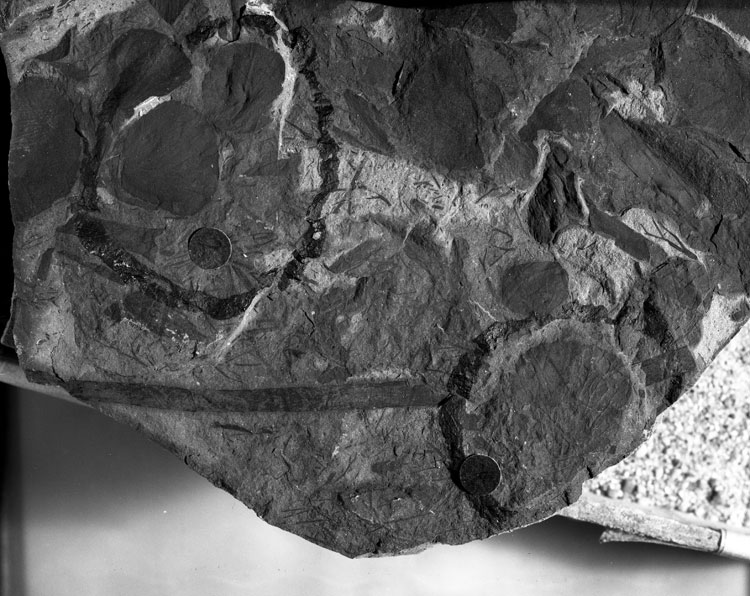Locality
USGS11479
69.417° -148.627°
Sagavanirktok (B-3) Quad.
Sagwon section. Plant megafossils were found in clay-ironstone nodules which often occur as sheets within a gray clay beneath coal seams.
Description
Leaf: apparently simple but known to form compound rosettes; cuneate, orbiculate, or reniform; apex rounded; base rounded or truncate; margin minutely serrate except at base where entire; teeth with acute apices, concave sides, wide rounded sinuses; venation flabellate with no clearly defined midvein; veins dichotomizing at least once, craspedodromous; tertiary and higher order veins indistinct.
Remarks
This type of leaf is widespread in its occurrence in the Upper Cretaceous and Tertiary of Alaska. When it occurs it is present in some abundance, usually accompanied by fragments of roots and the virtual exclusion of other leaf forms. Its apparent variations in shape and size are misleading when determining species as Brown (1962, p. 83) pointed out that fossil rosettes of the plant from Upper Cretaceous and Paleocene rocks exhibit leaflets that are reniform, rounded and peltate near the centre and those further out are spatulate, rounded, truncated cuneate, and attached basally. All, however, possess small pointed teeth on the margins. The plant is generally interpreted to be aquatic and occurs in lacustrine facies.
Krassilov (1979) described this form from Sakhalin under the name Quereuxia angulata.
